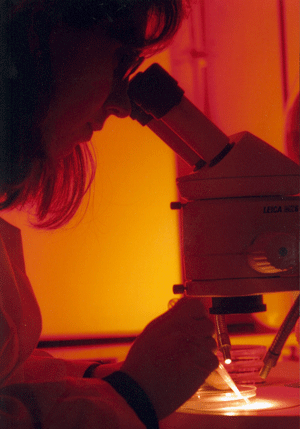

Lancaster Laboratories/Eli Lilly
Expression and Function of the ATP Dependent Chromatin Remodeler Imitation Switch in Xenopus laevis
One of the first ATP-dependent chromatin remodeling complexes was first identified and characterized more than a decade ago. Since then, the number of distinct ATP-dependent chromatin remodeling complexes and the variety of roles they play in nuclear processes have become dizzying. Some of the processes include transcription, replication, repair, recombination, and sister chromatid cohesion. The SWI/SNF-related ATP-dependent remodelers are divided into a number of subfamilies, all related by the SWI2/SNF2 ATPase at their catalytic core. In nearly every species where researchers have looked for them, one or more members of each subfamily have been identified. Here I have investigated the ATP-dependent chromatin remodeler ISWI. I have shown that Xenopus ISWI has a critical function in developing neural tissue. Whole mount in situ hybridization shows ISWI localized in neural tissue including the eye and developing neural tube. Injection of antisense ISWI RNA, morpholino oligonucleotides or dominant-negative ISWI mutant mRNA into fertilized eggs misregulates genes involved in patterning and development, such as BMP4 and Sonic hedgehog (Shh), and ISWI binds to the BMP4 gene in vivo. Partial inhibition of ISWI function results in aberrant eye development and the formation of cataracts. These data suggest a critical role for ISWI chromatin remodeling complexes in neural development.